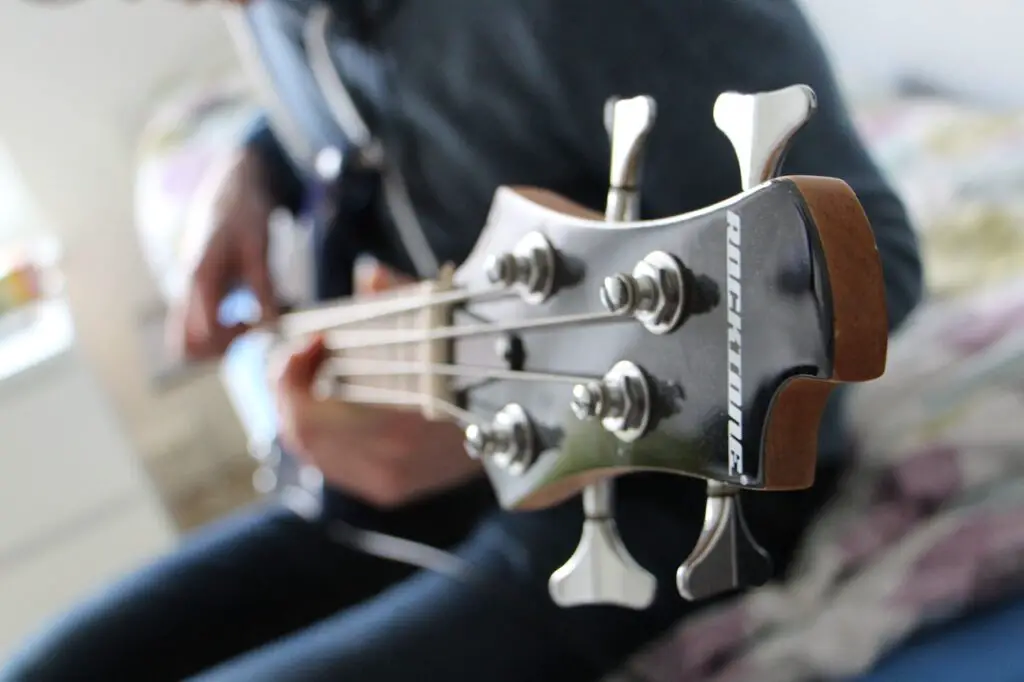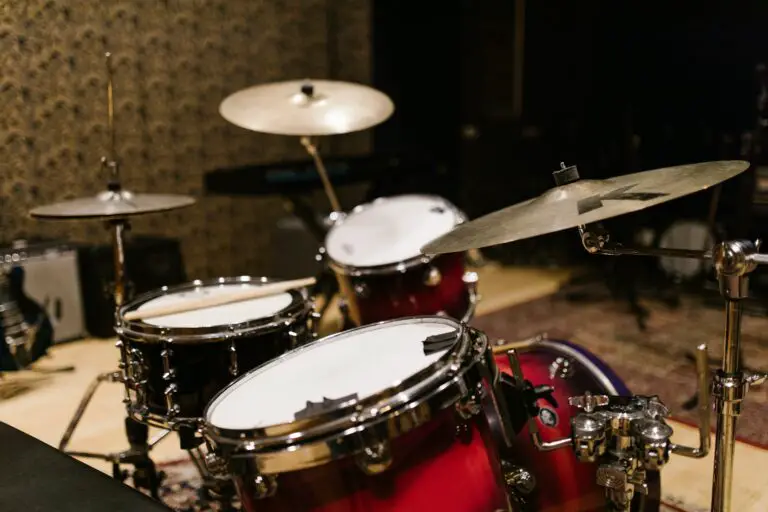Can You Play Bass With Small Hands?
So you want to play bass, but you’re looking at that long neck and those wide frets and thinking, “Is this even possible with my hands?”
Many people assume you need big hands to master the bass guitar, and let’s be honest, it can look pretty daunting.
Fortunately, it is possible to play bass with small hands. In fact, having small hands isn’t much of a deterrent when it comes to bass skills at all.
This article is going to show you how, from picking the right bass to fit you, to techniques that’ll make playing easier, to exercises that can strengthen your hands.
The Anatomy of a Bass Guitar
Understanding the bass guitar inside and out is the first step in comprehending how small hands can not only adapt but excel in playing this instrument.
Let’s get down to the nuts and bolts of what makes a bass guitar, focusing on the aspects most relevant to the matter at hand!
Scale Length
The scale length of a bass refers to the distance between the nut and the bridge, dictating the spacing of the frets along the neck. Bass guitars come in a few different sizes:
- Long-scale (34 inches)
- Medium-scale (30-32 inches)
- Short-scale (less than 30 inches)
Shorter scale lengths mean the frets are closer together, which can be a significant advantage for players with small hands as it requires less stretching between frets.
Understanding the scale length is crucial as it can influence your playing comfort drastically. Exploring bass guitars with different scale lengths might help you find the right match for your hand size.
Neck Width and Thickness
Aside from the scale length, the neck dimensions, including its width and thickness, play pivotal roles in determining how comfortable a bass is to play.
A narrow neck might allow for easier reach across strings, while a thinner neck might facilitate a more comfortable grip, both essential aspects for players with smaller hands.
When choosing a bass guitar, paying attention to the neck’s specifications in the product details or trying out the instrument in person could guide you to find a bass guitar that feels right in your hands.
String Spacing
String spacing refers to the distance between individual strings on the bass guitar, generally measured at the bridge.
Wider string spacing can give you more room to play individual strings without accidentally hitting others, but it can also mean a farther reach between strings.
For small-handed players, a bass guitar with narrow string spacing might be a preferable choice, as it allows for more comfortable hand positioning and less stretching between strings.
The Challenges of Playing Bass With Small Hands
While playing the bass guitar with small hands is entirely doable, there are some inherent challenges that players might face. Let’s delve into some of the common challenges:
Reaching Frets
One of the notable challenges is reaching the frets, especially those that are farther apart.
Players with small hands might find it difficult to reach certain frets without overextending their fingers, which can lead to uncomfortable hand positions and potentially affect the fluidity of their playstyle.
This can be particularly noticeable when trying to play intricate pieces that require a large fret span.
Stretching for Certain Chords
Bass players often encounter chords that require a significant stretch between the fingers.
For someone with small hands, these stretches can be strenuous and sometimes painful. Some chords might even seem impossible to grasp initially.
It’s essential to acknowledge this challenge and to work progressively towards building the flexibility and reach of your hands through targeted exercises and techniques, which we will cover later in this article.
Speed and Dexterity Issues
With smaller hands, achieving a fast playing speed can be a bit more challenging.
Moving quickly across the fretboard might require more effort and energy as you might need to cover more ground with a smaller reach.
Moreover, faster genres of music can pose a significant challenge, especially when it involves complex lines that require rapid finger movement.
Fatigue
Smaller hands might tire more quickly due to the extra effort required to navigate the fretboard.
This is particularly true during extended play sessions where the constant stretching and reaching can lead to early onset of fatigue.
It’s not just about muscle fatigue; small hands can also experience more strain on the joints and tendons, which could potentially lead to injuries over time if not addressed properly.
How to Play Bass with Small Hands
If you have small hands, playing the bass guitar can feel like a daunting task.
But fret not (pun intended); there are strategies and techniques to help you navigate the bass fretboard with ease.
Let’s delve into some of the techniques that can assist in overcoming the challenges that small hands might face:
Proper Hand Positioning
Right from the get-go, how you position your hand can make a massive difference in your playing experience. To avoid straining your hand, keep a relaxed posture.
Ensure that your wrist is not bent excessively, as it can lead to discomfort and potential injuries over time.
It’s about finding a position that allows the most comfort and range of movement, facilitating easier reach to various frets without straining your hand muscles.
Thumb Placement
Your thumb’s positioning at the back of the neck can serve as a pivotal support point, assisting in leverage and reach.
Generally, aligning your thumb with the middle finger provides a balanced grip, allowing for better reach across the fretboard.
However, don’t hesitate to explore different thumb positions that could potentially offer more comfort and a better reach of frets.
Utilizing the “One Finger per Fret” Rule Smartly
The “one finger per fret” rule is a guideline where each finger is responsible for one fret, helping in playing notes more efficiently.
However, for individuals with small hands, sticking rigidly to this rule can be more hindering than helpful.
Therefore, it is smart to adapt this rule flexibly, sometimes using a single finger to cover multiple frets or employing a three-finger technique to navigate the frets more comfortably.
Alternate Tunings
Exploring alternate tunings can be a game-changer, especially when it comes to reducing the stretches required between frets.
By tuning the strings to different notes, you can bring notes that were initially far apart closer together, making them more accessible.
Some popular alternate tunings include Drop D and DADG, but feel free to experiment to find the tuning that suits you best.

Notable Bass Players With Small Hands
In the music world, talent and skill often trump physical stature.
Some renowned bassists have proven that having small hands is not a hindrance but perhaps even an advantage when it comes to mastering the bass guitar.
Let’s take a closer look at some notable artists with small hands and how they have adapted to excel in their craft.
Tal Wilkenfeld
At a young age, Tal Wilkenfeld has shared stages with legends such as Jeff Beck and Eric Clapton.
Despite having smaller hands, her technical prowess and agility on the fretboard are undeniable. Tal has never seen her hand size as a limitation; instead, she continually showcases virtuosic performances that mesmerize audiences worldwide.
Kim Gordon
The iconic Sonic Youth bassist, Kim Gordon, has been a massive figure in the alternative rock scene.
Her smaller hand size never stopped her from crafting deep, resonant bass lines that became a signature of Sonic Youth’s sound.
Gordon often employs alternative tunings to facilitate her playstyle, making it easier to reach notes on the fretboard.
Victor Wooten
A luminary in the bass guitar world, Victor Wooten, stands as a testament to the fact that hand size doesn’t dictate skill level.
While not having the smallest hands, Wooten doesn’t possess exceptionally large hands either.
He often utilizes a two-handed tapping technique, an approach that can be beneficial for individuals with smaller hands, offering a method to navigate complex passages with ease.
The Importance of Hand Exercises For Bass Playing
Whether you have small or large hands, nurturing strength and flexibility through targeted hand exercises is pivotal for any bass player.
For individuals with small hands, these exercises can be even more critical to developing a playing style that is both comfortable and efficient.
Let’s discuss the different facets of hand exercises that can aid in this endeavor:
Finger Stretches
Before you dive into a rigorous practice session or a performance, it’s beneficial to start with finger stretches to prepare your hands for the physical demands of playing the bass.
Gentle stretches can help in:
- Increasing Flexibility: Regular stretching can enhance the flexibility of your fingers, allowing you to reach farther frets more easily over time.
- Preventing Injuries: Proper stretching can also help prevent potential injuries that can arise from the repetitive stress of playing the bass.
Remember to stretch each finger individually and hold each stretch for a few seconds without forcing any movement to the point of pain.
Warm-up Exercises
Exercises to warm up are crucial to get your hands ready for the actual practice session. Warm-up exercises should ideally focus on:
- Coordination: Exercises that involve playing scales or simple melodic patterns can help in building coordination between your fingers.
- Building Muscle Memory: Warm-up sessions are a great time to work on building muscle memory, helping you to navigate the fretboard with more ease and confidence.
It is recommended to start slowly and then gradually increase the speed to warm up effectively without straining your hands.
Building Hand Strength
Building hand strength is a gradual process that comes with regular practice and targeted exercises. Consider incorporating exercises that focus on:
- Finger Independence: Work on exercises that promote finger independence, helping you to use each finger more effectively while playing.
- Grip Strength: Exercises that build grip strength can be beneficial in preventing fatigue during extended play sessions.
You might consider using grip strengtheners or other hand exercise equipment to aid in building hand strength more efficiently.
Final Thoughts
In the grand journey of mastering the bass guitar with small hands, there is indeed no mountain too high.
From optimizing your setup with the right kind of bass to adopting alternate tunings, and even learning from the pros who’ve already forged paths of success — the toolbox is rich for the modern bass player.
Sprinkle in regular hand exercises to foster dexterity and strength, and voila, you’re not just playing; you’re excelling.
So, small-handed bass aficionados, fear not! Dive in, experiment, and find joy in making those bass lines sing, because small hands can indeed rock big sounds!







